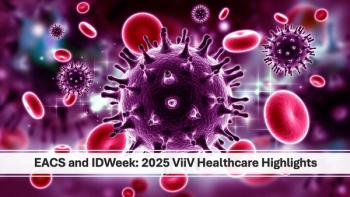
Study Looks at How an HIV Protein Can Alter Immune Cells and Fuel Chronic Inflammation
Research results published in Cell Reports implicate the Nef protein as a possible cause of disease-causing inflammation that persists even when an HIV infection is controlled.
In the era of effective antiretroviral treatment, HIV-infected people live a practically normal life. Unfortunately, they are at high risk of developing diseases seemingly not associated with HIV, including cardiovascular disease and neurocognitive impairments, which affect almost 50% of people living with HIV (PLWH).
A common feature of these disease associated with HIV is chronic inflammation. But the understanding of why inflammatory processes persist even when HIV infection is effectively suppressed is limited.
That led researchers from the George Washington University to examine why chronic inflammation may be happening and how suppression or even eradication of HIV in the body may not resolve it.
In a
“The main finding is that specialized immune cells, macrophages, acquire memory of encountering the virus,” Bukrinsky says. “This memory translates into over-responsiveness of these cells to subsequent stimulation with inflammatory factors derived from HIV-unrelated infectious agents.”
This over-responsiveness leads to pronounced inflammation in response to stimuli that under physiological conditions would be quickly resolved.
“We identified the HIV protein,
The research team isolated human immune cells in vitro and exposed them to Nef.
“The amount of Nef introduced to the cells is similar to the amount found in about half of HIV-infected people taking antiretrovirals whose HIV load is undetectable,” Bukrinsky says.
The researchers introduced a bacterial toxin to generate an immune response from the Nef-exposed cells. Compared to cells that were not exposed to the HIV protein, the Nef-exposed cells produced an elevated level of
When the team compared the genes of the Nef-exposed cells with the genes of the cells not exposed to Nef, they identified proinflammatory genes that were in a ready-to-be-expressed status as a result of the Nef exposure.
“Nef induces changes in the regulatory machinery that controls gene expression,” Bukrinsky says. “Such epigenetic changes can persist in cells and even transfer to daughter cells during cell division. This is what likely happens with HIV: progenitor cells in the bone marrow from which all monocytes/macrophages develop acquire this memory and keep transferring it to progeny cells even when HIV is suppressed or eliminated.”
The main takeaway from the study is that treatment of PLWH should include reversal of proinflammatory memory of their myeloid cells.
“This strategy should also accompany our HIV cure efforts,” Bukrinsky says. “Such memory may also occur in other viral infections and should be investigated with other viruses, such as SARS-CoV-2.” SAVS-CoV-2 is the virus that causes COVID-19.
Because this study was done in human cells and mice, the first question that needs to be investigated next is how important this phenomenon is in people, not just cells.
If the findings hold up, they could help explain why certain comorbidities persist following other viral infections, including COVID-19.
“Next, it needs to be determined how long this memory can persist,” Bukrinsky says. “And finally, what therapeutic agents can reverse this memory and normalize cellular responses to infections. We are pursuing all these lines of investigation.”
Newsletter
Get the latest industry news, event updates, and more from Managed healthcare Executive.

















































